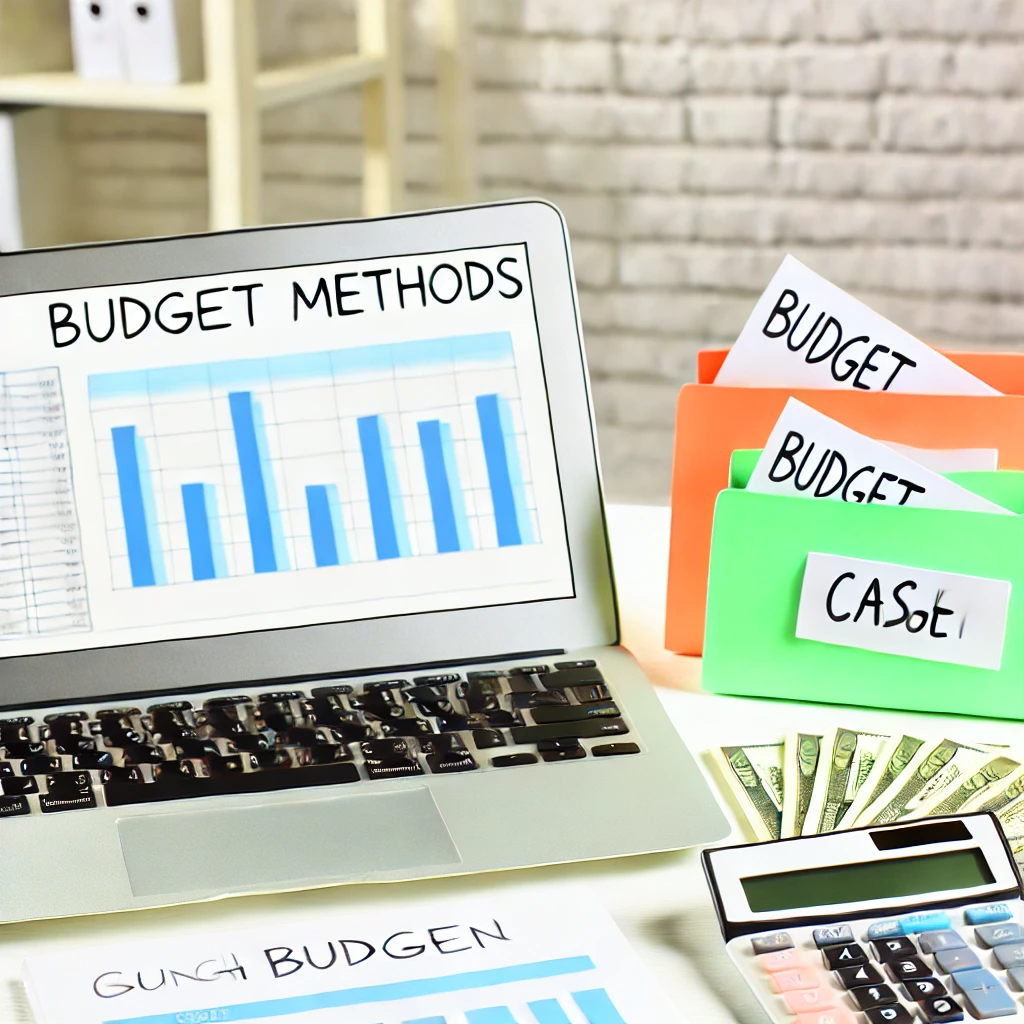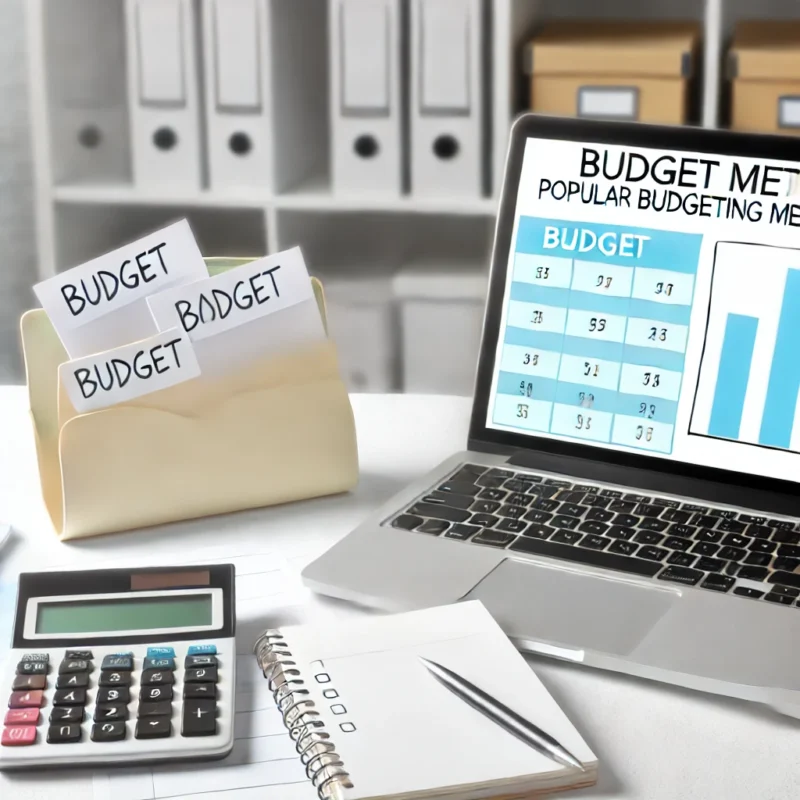In today’s fast-paced financial world, mastering your money is more crucial than ever. Whether you’re saving for a dream vacation, trying to eliminate debt, or simply seeking better control over your spending, adopting the right budgeting strategy can be the game-changer that transforms your financial life. This comprehensive guide explores three popular budgeting methods: the 50/30/20 rule, Zero-based budgeting, and the Envelope system. By the end of this article, you’ll understand each method’s strengths and weaknesses and be able to choose the one that best fits your financial goals and lifestyle

The 50/30/20 Rule: Simplicity Meets Flexibility
The 50/30/20 rule is one of the most straightforward and beginner-friendly budgeting methods. This rule divides your after-tax income into three distinct categories:
- 50% for Needs
- 30% for Wants
- 20% for Savings and Debt Repayment
How the 50/30/20 Rule Works
Let’s break down each category in detail:
50% for Needs
This is the portion of your income that goes towards the essentials—the things you absolutely can’t live without. These include:
- Housing costs: Rent or mortgage payments
- Utilities: Electricity, water, gas, and other necessary bills
- Groceries: Food and basic household supplies
- Transportation: Car payments, fuel, or public transport costs
- Insurance: Health, car, or renters insurance
- Minimum debt payments: The required monthly payments for debts like credit cards or student loans
30% for Wants
This portion is allocated to discretionary spending—things that improve your quality of life but aren’t essential for survival. This might include:
- Dining out at restaurants
- Entertainment: Movies, concerts, and streaming services
- Travel and vacations
- Hobbies: Gym memberships, classes, or gear for your interests
- Non-essential shopping: Clothes, gadgets, and luxury items
20% for Savings and Debt Repayment
The final 20% of your income should be devoted to building your financial future. This category includes:
- Savings: Contributing to an emergency fund, high-yield savings accounts, or other short-term savings goals
- Investments: Retirement accounts such as a 401(k) or IRA
- Debt repayment: Paying off debts faster than the minimum required to reduce interest costs and improve financial stability
Pros of the 50/30/20 Rule
- Simplicity: It’s easy to understand, making it accessible for those who are new to budgeting.
- Flexibility: It allows for discretionary spending, so you won’t feel too restricted.
- Balance: The rule ensures that you address both your immediate needs and your long-term financial goals.
Cons of the 50/30/20 Rule
- One size doesn’t fit all: For people living in high-cost areas or with irregular incomes, the percentages may not be realistic.
- General categories: Some expenses may not fit neatly into the “needs” or “wants” categories, creating confusion.
Who is it Best For?
- Budgeting beginners: This method’s simplicity makes it an excellent starting point for those new to managing money.
- Stable incomes: If your monthly income is consistent, this rule will work well for you.
- Low-maintenance budgets: It’s ideal for those who want a budget that doesn’t require constant tracking.
Zero-Based Budgeting: Precision and Accountability
Zero-based budgeting (ZBB) takes a more detailed, hands-on approach. With this method, every dollar of your income is assigned a job. Your goal is to ensure that your total income minus your total expenses equals zero at the end of each month.
How Zero-Based Budgeting Works
Zero-based budgeting requires that you account for every dollar you earn. Here’s how it breaks down:
- List all income sources: Start by listing your total monthly income (from all sources).
- Track every expense: Assign every dollar a specific purpose—whether it’s for rent, groceries, savings, or entertainment.
- Adjust as needed: If you find that your expenses exceed your income, you’ll need to either reduce spending or allocate more from another category.
Example: If your monthly income is $3,500, you’ll assign that entire amount across categories like rent, food, bills, entertainment, and savings, ensuring that nothing is left unaccounted for.
Pros of Zero-Based Budgeting
- Complete control: Every dollar is tracked and accounted for, so there’s no ambiguity about where your money goes.
- Optimized spending: It encourages you to make more intentional decisions about how you spend and save.
- Excellent for paying off debt: You can allocate more towards debt repayments by finding “extra” dollars.
Cons of Zero-Based Budgeting
- Time-consuming: This method requires regular attention and updating, which can be challenging for those with busy schedules.
- Requires discipline: It’s easy to fall off track if you don’t keep a close eye on your expenses.
Who is it Best For?
- Detail-oriented people: If you love keeping track of every penny, this method is for you.
- Irregular incomes: Zero-based budgeting works well for people with fluctuating monthly incomes because it forces you to plan precisely.
- Debt-focused individuals: It’s ideal for those aggressively working to eliminate debt.
The Envelope System: Cash-Based and Tangible
The Envelope System is a cash-based budgeting method that helps control discretionary spending by physically dividing your income into envelopes labeled for specific expenses.
How the Envelope System Works
With this method, you allocate cash into separate envelopes for each spending category. For example:
- Rent or mortgage envelope
- Groceries envelope
- Entertainment envelope
- Utilities envelope
Once the cash in an envelope is gone, that’s it—you can’t spend more in that category until the next month.
Pros of the Envelope System
- Tangible control: Physically handling cash can help you be more mindful about your spending.
- Limits impulse spending: Once an envelope is empty, you’re forced to wait until your next paycheck to refill it.
- Great for those prone to overspending: If you struggle with swiping your card too often, this method offers a physical barrier to overspending.
Cons of the Envelope System
- Inconvenient in a digital age: With so much spending happening online, it can be impractical to only use cash.
- Risk of loss: Carrying around large sums of cash can be risky if lost or stolen.
- Not ideal for fixed expenses: The system works better for variable costs (like groceries or entertainment) than fixed costs (like rent).
Who is it Best For?
- People who prefer using cash: If you find it easier to budget with physical cash, this method will help you stay on track.
- Those who struggle with self-control: If you have a hard time staying within budget, the envelope system can be a helpful tool.
Which Budgeting Method is Right for You?
Choosing the best budgeting method depends on your financial goals, lifestyle, and personal preferences. Here’s a quick summary:
- 50/30/20 Rule: Ideal for beginners who want a simple, flexible budget that still saves and pays off debt.
- Zero-Based Budgeting: Best for those who want complete control over their money and are willing to invest the time to track every dollar.
- Envelope System: Great for those who prefer tangible control with cash and need a physical barrier to prevent overspending.
No matter which method you choose, the key is to start and stay consistent. Mastering your money isn’t about fitting into a one-size-fits-all mold; it’s about finding a system that works for you and sticking with it. Once you do, you’ll be well on your way to achieving financial freedom.








